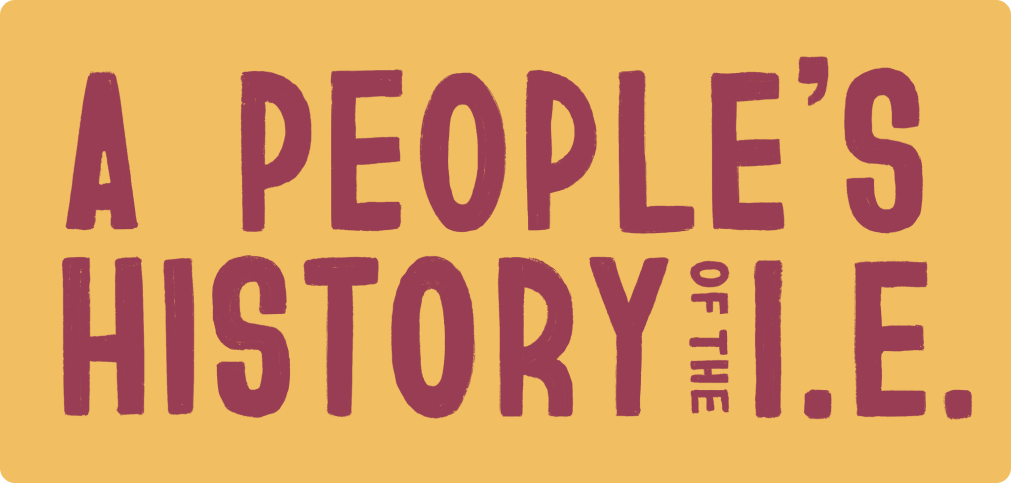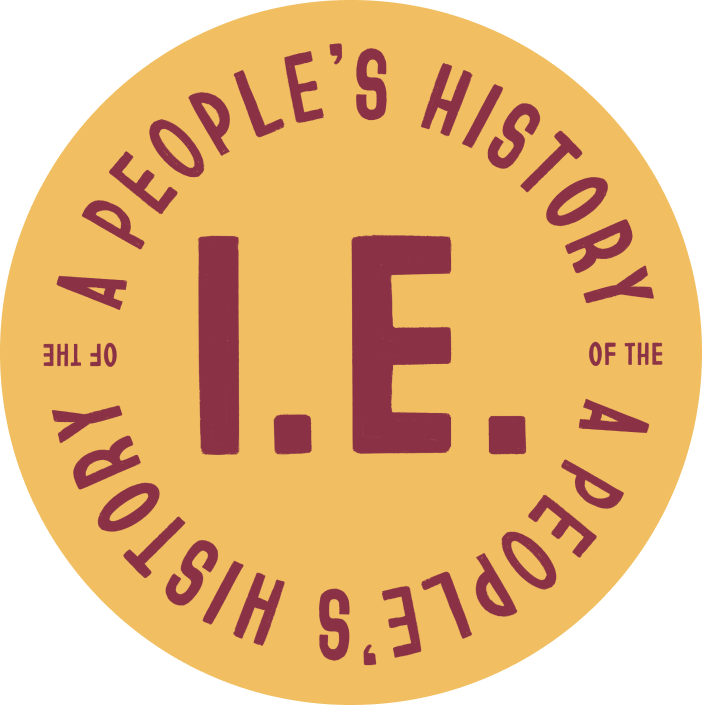A People’s History of the Inland Empire Digital Archive

Building history from the ground up, in the voices of those who have experienced it.
A People’s History of the Inland Empire: Storyscapes of Race, Place, and Queer Space documents the experiences of people who have lived and worked in Riverside and San Bernardino Counties. This digital archive and its related mapping platform together document historic communities of color, patterns of segregation, & organizing for civil rights.
Explore and contribute to our growing collection of oral histories, photographs, and other materials representing Black, Latinx, Asian American and Pacific Islander American, LGBTQ+, and working people's histories of the I.E.
What is A People's History of the I.E.?
We are a digital, community-based archive. We focus on stories of working people, communities of color, and LGBTQ+ individuals whose experiences have often been under-represented in traditional institutions. We are always looking for new partnerships and to help others share their histories through A People's History digital archive.
What are Storyscapes of Race, Place, and Queer Space?
We map information about people, places, and historical events in ArcGIS--a global information system we use to understand how racialized landscapes have been literally and metaphorically constructed in our region. We have not found the famous “redlining” maps for the I.E. that banks used beginning in the late 1930s to determine investment risks of neighborhoods based on the race, ethnicity, and political activities of residents. But we know these characteristics played a large part in shaping investments in the region. So we set out to learn more, to map stories of disinvestment as well as those of joy, creative resistance, and resilience--stories of thriving and striving.
What is a digital, community-based archive?
Archives house original historical items, safeguarding them for the future. Our archive is "post-custodial," meaning it is digital, so that the originals can stay within the community and not in a building faraway from families who might want them at hand. Archives are useful for anyone learning about history, from world history to genealogy. They offer proof of our existence, well beyond the time we stay within living memory.
What makes A People’s History different?
We strive to make digitally accessible materials that are often tucked away in closets, attics, and trunks, as part of family memorabilia, which have larger historical value too. We also bring together important archival materials from institutions throughout the Inland Empire, allowing public access to previously unseen materials. Since this is a digital archive, we invite community members to share what they know about what is posted online, or tell us to take down what they think ought to be kept private. We contine to grow so check back to see what new items we have added.
So what is in the archive?
A People’s History includes audio and video oral history interviews; digitized photographs; videos; and other printed materials.
How can I use these materials?
A People’s History is purely nonprofit and educational, aimed to be a resource for researchers, students, teachers, and community members and advocates. Portions of the archive may be used for K-12 lesson plans, educational purposes (like school projects), and by researchers wanting to know more about our communities. You can dive in by going to “Explore the Archive,” view our individual collections, use the search bar, or explore our collection highlights. If you are interested in using any of our materials that are in copyright or for any for-profit purposes just contact us!
How can I get involved?
Did you see an image that you can identify? A person in a class photo who you are related to? Did you find a mistake we made (oops)? Contact us to share your stories, correct errors we have made in the record, or take down material representing you or your family that you believe should remain private.





